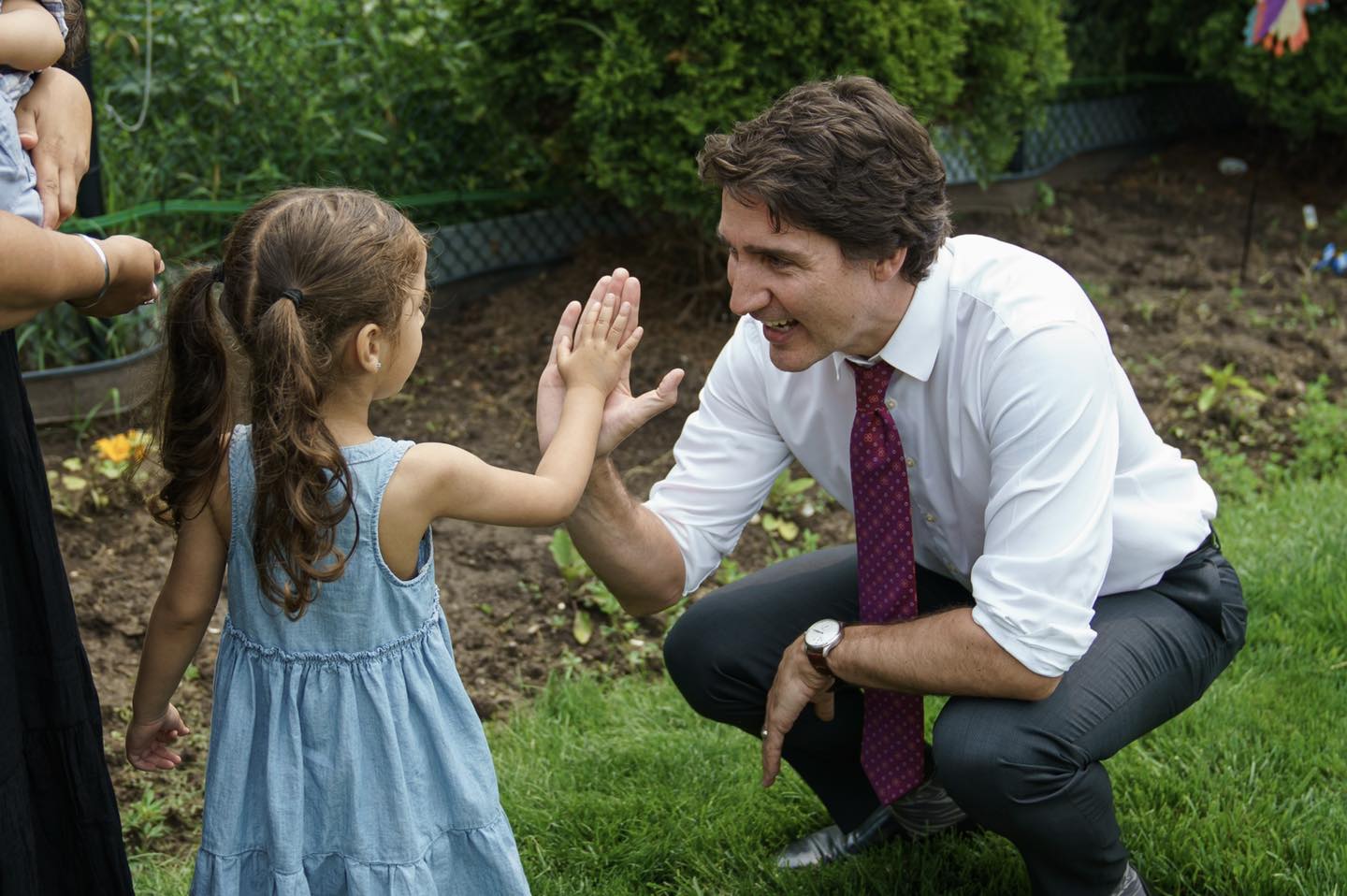Canada News
Ontario needs to remove barriers to child-care subsidies for low-income families

In Canada, many children spend a significant part of their day in early learning and child care, whether in centres or home-based settings. (File Photo: Justin Trudeau/Facebook)
In September, a major turnover in child care occurs, as preschoolers graduate to kindergarten and a new wave of preschoolers enters into early learning and care systems.
This year, the pressures on the child-care sector have increased dramatically as governments are radically decreasing the costs of child care for families as they implement Canada-wide early learning and child care (CWELCC) agreements.
The government of Ontario has projected significant increases in demand for child care as a result of lower fees. In these early days, we are not aware of evidence of this happening, but anecdotally this seems to be the case.
While provinces are talking about increasing the number of spaces, substantial labour shortages in staff (since pay and benefits are poor in this sector) and insufficient investment in physical spaces likely mean that increases in demand will far outpace increases in supply.
When resources are scarce, disadvantaged parents and children receive the short end of the services stick while more affluent families are more likely to secure access to higher-quality services.
Research from 2005 found that following Québec’s move to significantly expand a network of daycare services in 1997 and reduce fees for parents, “the overall quality of the daycare settings attended by children from less privileged families was significantly lower than that of those attended by children from more privileged families.”
Ontario’s current implementation plan for child care and early learning agreements runs the risk of leaving disadvantaged families further behind, rather than closing gaps in opportunities and outcomes for their children. To prevent this, Ontario, and indeed all provinces, need to double down on removing barriers to child-care subsidies for low-income families.
Lower-income families have less access
In Canada, many children spend a significant part of their day in early learning and child care, whether in centres or home-based settings.
With the introduction of new child care agreements across Canada, all families are eligible for substantial fee reduction.
For example, when Ontario’s agreement is fully implemented, fees should be down to approximately $12 per day, regardless of whether both parents (or one parent in single-parent households) work or study.
$10 a day is a hardship for many
Before the federal government announced the introduction of Canada-wide early learning and care agreements, most parents who received a child-care subsidy in Toronto paid well below $10 per day. For example, when we examined data pertaining to nearly 900 parents recruited from the City of Toronto’s child-care subsidy waitlist, we found that, based on their financial and work/study activity eligibility, parents paid an average of $3.33 per day.
Since their fee contribution was set based on financial eligibility criteria, this means that $10 per day would be a hardship for many of these families. Without additional fee subsidies, these parents would likely not be able to afford care.
Complicating factors
Even if parents can afford child care (whether through their earnings or subsidies), they still need to secure a space. Wait lists for child care can be long, with some parents having to get in line even before their child is born.
This is especially challenging for families who are new to Canada or unfamiliar with the system, as well as those in neighbourhoods with limited child-care options.
As documented by the research of Petr Varmuza, one of the authors of this story, in the City of Toronto, when neighbourhoods have lower levels of income and maternal education, they tend to have lower availability of child care.
One complicating factor is that parents find it hard to evaluate the quality of care their children receive, with many being unaware of whether it is licensed or not.
Disadvantages compounded
It is concerning that children from lower-income families are less likely to have access to any form of licensed care. Low-income families tend to have limited knowledge of the child-care sector and tend to live in neighbourhoods with fewer child-care spaces per child.
Furthermore, because subsidies for low-income parents are tied to parent activity, if their circumstances change for any reason (like losing a job, going on parental leave or caring for a sick family member), their subsidy is revoked. And research has linked such disruptions in care to worse outcomes for children.
It is simply unfair that low-income parents are subject to these activity requirements in order to receive the level of subsidy they need while, under the current framework for CWELCC, higher income parents are not subject to these restrictions.
Remove work/study requirements
To address this inequity, all work/study requirements for fee subsidies should be removed.
Inclusivity is explicitly stated as an important goal of the federal government’s Canada-wide early learning and child care initiative, and one aimed at providing support to society’s most vulnerable populations and ensuring the healthy development of their children.
However, for vulnerable and marginalized groups, access to early learning and child care remains uncertain. This inclusivity goal must become a top priority to fulfil affordable care for all families.
The ultimate solution is publicly funded child care with enough spaces for everyone.![]()
Michal Perlman, Professor of Applied Psychology and Human Development, University of Toronto; Petr Varmuza, Assistant Researcher, Perlman Lab, Ontario Institute for the Studies of Education, University of Toronto, and Samantha Burns, Ph.D. Student, Developmental Psychology and Education, University of Toronto
This article is republished from The Conversation under a Creative Commons license. Read the original article.





















